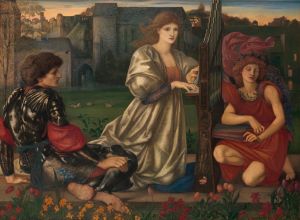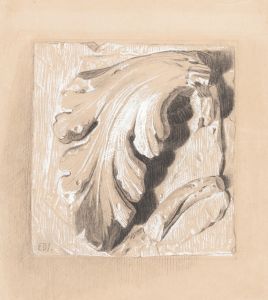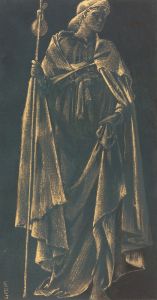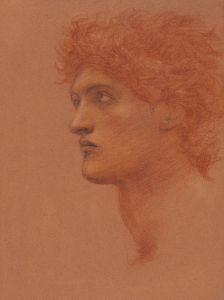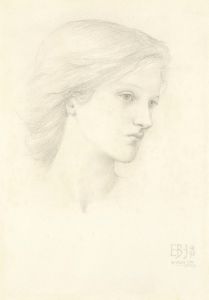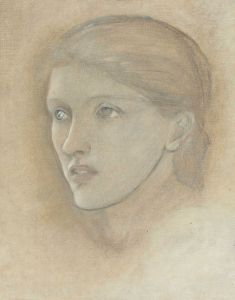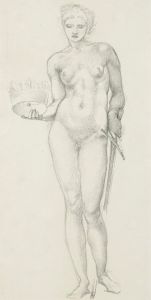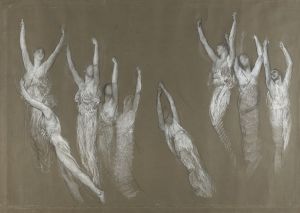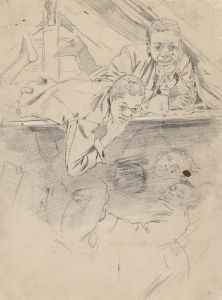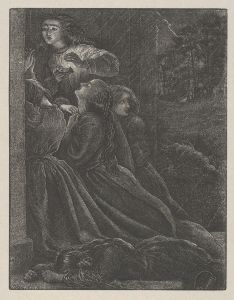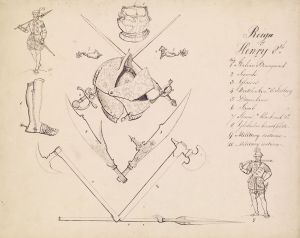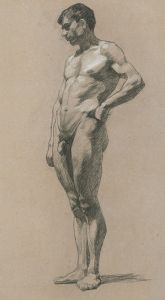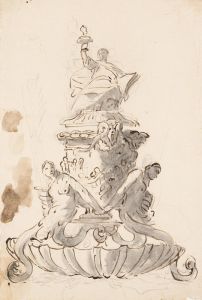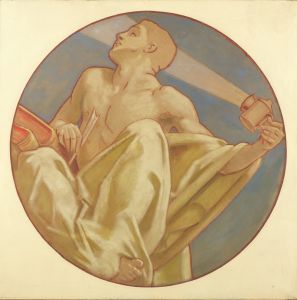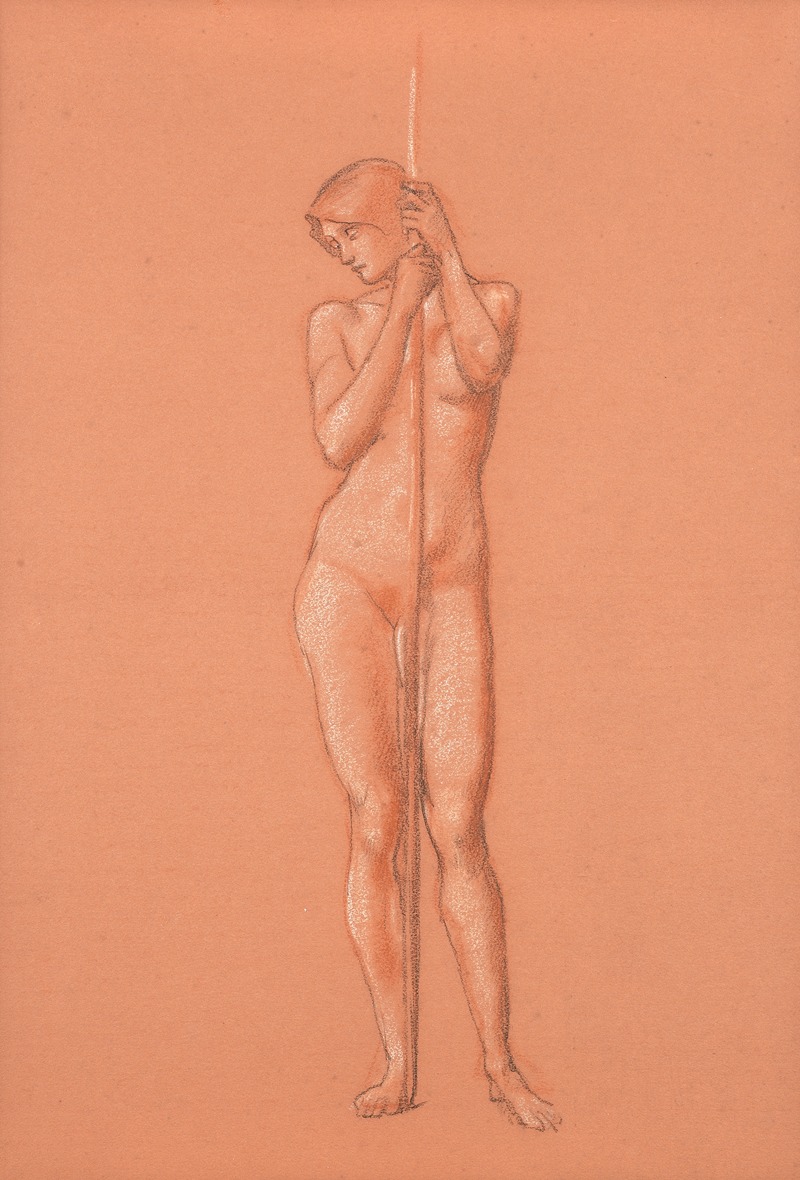
Nude study for attendant figure holding a spear in The Sleep of Arthur in Avalon
A hand-painted replica of Sir Edward Coley Burne-Jones’s masterpiece Nude study for attendant figure holding a spear in The Sleep of Arthur in Avalon, meticulously crafted by professional artists to capture the true essence of the original. Each piece is created with museum-quality canvas and rare mineral pigments, carefully painted by experienced artists with delicate brushstrokes and rich, layered colors to perfectly recreate the texture of the original artwork. Unlike machine-printed reproductions, this hand-painted version brings the painting to life, infused with the artist’s emotions and skill in every stroke. Whether for personal collection or home decoration, it instantly elevates the artistic atmosphere of any space.
Sir Edward Coley Burne-Jones, a prominent figure in the Pre-Raphaelite Brotherhood, is renowned for his intricate and symbolic works that often draw on themes from mythology, literature, and medieval history. One of his significant projects was "The Sleep of Arthur in Avalon," a large and ambitious painting that he worked on from 1881 until his death in 1898. This painting depicts the legendary King Arthur in a mystical sleep on the island of Avalon, surrounded by attendants and other figures from Arthurian legend.
"Nude Study for Attendant Figure Holding a Spear in The Sleep of Arthur in Avalon" is a preparatory work by Burne-Jones, created as part of his extensive process for developing the final composition of "The Sleep of Arthur in Avalon." Burne-Jones was known for his meticulous approach to painting, often producing numerous studies and sketches for each figure in his larger works. These studies allowed him to explore different poses, compositions, and details before committing them to the final canvas.
The nude study in question focuses on one of the attendant figures in the painting, specifically one holding a spear. This figure is part of the group surrounding the sleeping Arthur, contributing to the painting's atmosphere of serene vigilance and timelessness. The study showcases Burne-Jones's skill in capturing the human form, emphasizing the grace and fluidity of the figure's pose. The attention to anatomical detail and the delicate rendering of musculature are characteristic of Burne-Jones's style, reflecting his admiration for the art of the Italian Renaissance and his desire to imbue his works with a sense of classical beauty.
Burne-Jones's studies were typically executed in pencil, chalk, or ink, and this particular study would have been used to refine the figure's placement and posture within the larger composition. The use of nude studies was a common practice among artists of the time, allowing them to understand the underlying structure of the human body before adding clothing and other details in the final work.
"The Sleep of Arthur in Avalon" itself is a monumental painting, measuring approximately 279 cm by 650 cm (110 inches by 256 inches). It was commissioned by George Howard, 9th Earl of Carlisle, and was intended for his residence at Naworth Castle. The painting is considered one of Burne-Jones's masterpieces, encapsulating his fascination with the themes of death, sleep, and the passage of time. The work is imbued with a sense of melancholy and introspection, qualities that are echoed in the preparatory studies such as the nude study for the attendant figure.
Burne-Jones's contribution to the Pre-Raphaelite movement and his influence on subsequent generations of artists are significant. His dedication to craftsmanship and his ability to convey complex narratives through his art have left a lasting legacy. The "Nude Study for Attendant Figure Holding a Spear in The Sleep of Arthur in Avalon" is a testament to his artistic process and his commitment to creating works of enduring beauty and meaning.





